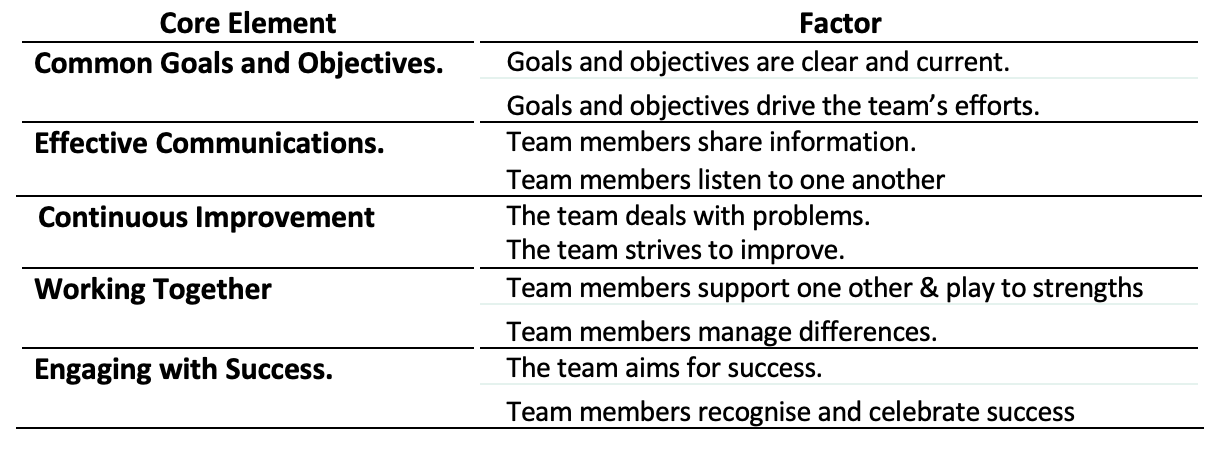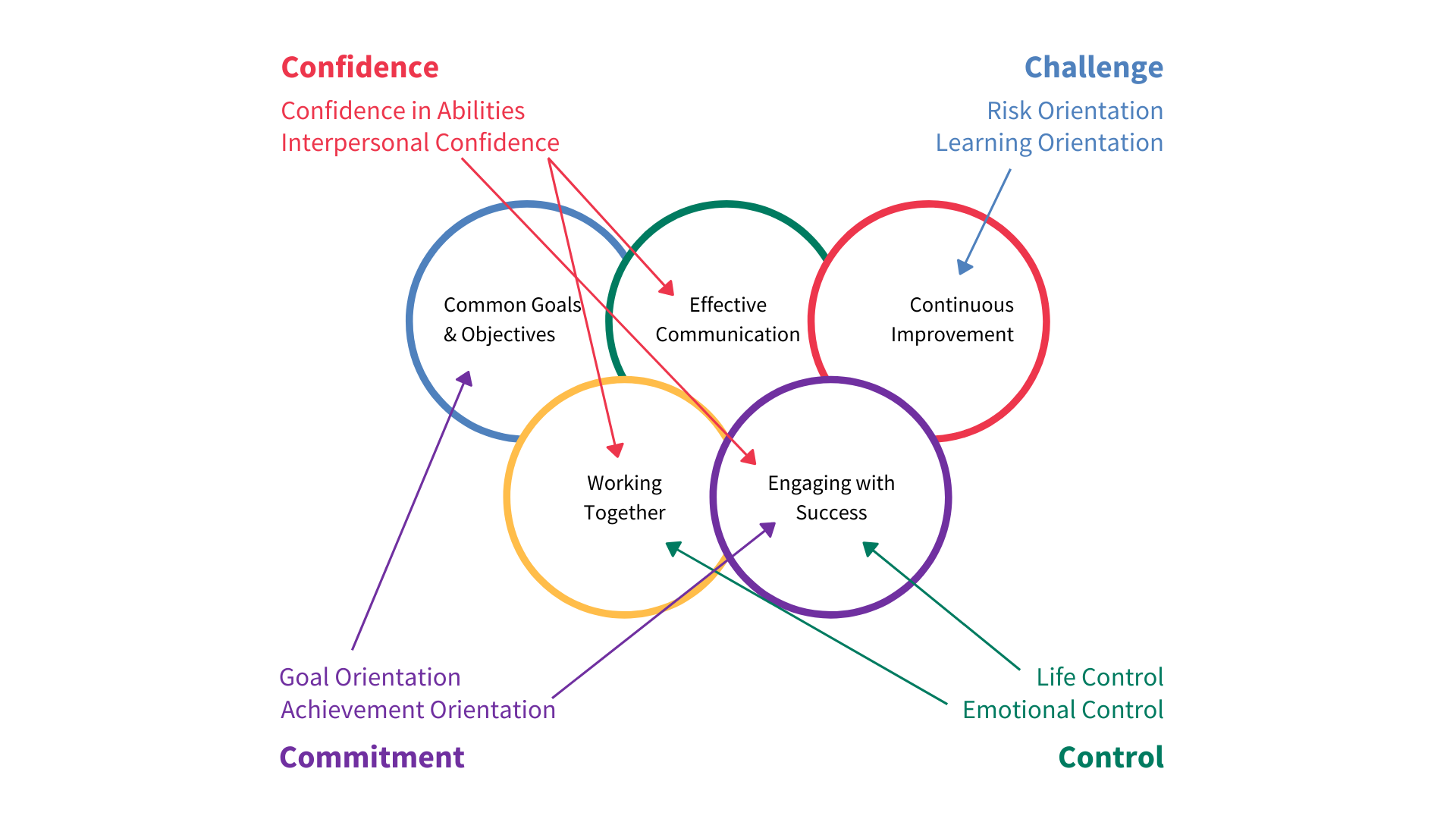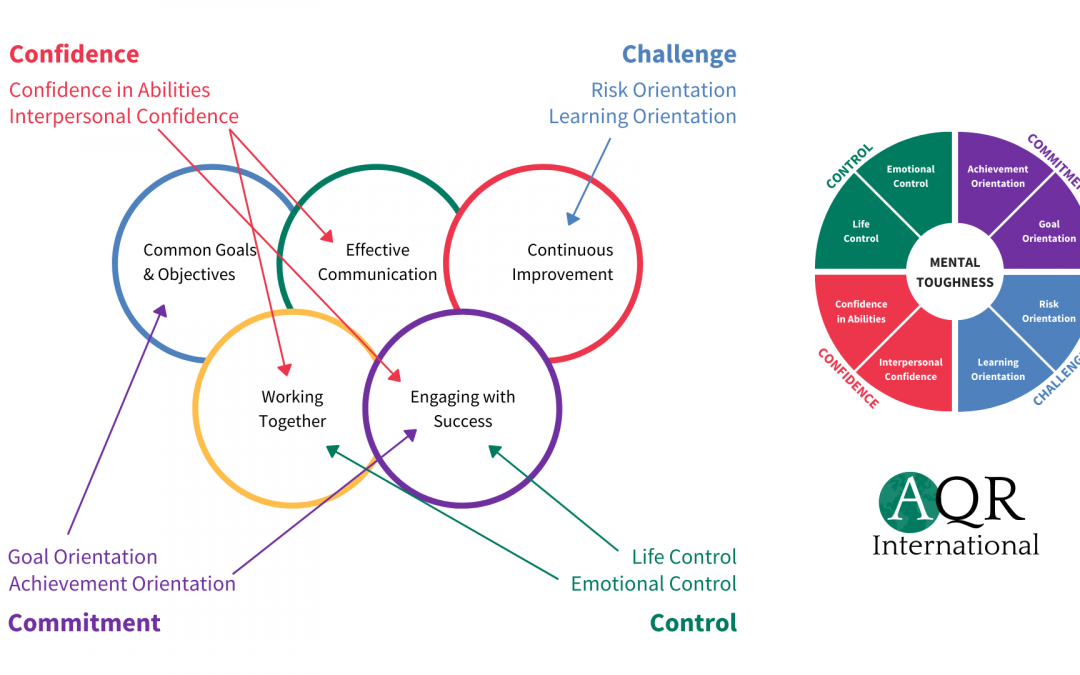Putting positivity and resilience back into teams and team working.
In my last post, I reflected on the resurgence of interest in team working at the current time. As the pandemic has worn on, we see established teams being disrupted and organisations re-organising in ways that impact on team working. Although the pandemic has brought this into sharp focus, it is also the case that, in any case, the fast-moving VUCA world was creating pressures that impacted teams and teamworking.
The recurrent focus in these enquiries was on resilience – dealing with knocks and setbacks – and on positivity – seeing opportunity in the midst of crisis and chaos and believing in the capability to grasp that opportunity.
This of course describes the Mental Toughness concept in a nutshell. Usefully it can provide much of the insight we are looking for from two perspectives. Firstly, what would a mentally tough team look like and how relevant is individual mental toughness in the team.
A recap on the AQR Team Working concept identifies 5 core attributes each made up of two factors. We examined this in the previous post. The model is shown below:

The core attributes are represented in a 5 overlapping circles Venn diagram.
Teams can self-assess the extent to which they adopt these behaviours through the TWOI – the teamwork orientation inventory.
What does a mentally tough team look like?
Collectively this will be the team that adopts a consistent and reasonably common mental response to events – crises, setbacks, problems, challenges and opportunities. The culture will be one of resilience as well as positivity.
The mental toughness concept consists of 4 constructs and, from that, 8 factors that describe the components of resilience and positivity.
This is summarised in the table below:

We can bring the two ideas together through a form of matrix analysis and see that there are some primary connections between the Mental Toughness factors and the core attributes and behaviours which provide an insight where the collective mental toughness of the team contributes to, and supports, the core team working attribute.
Usefully we can assess this through the use of the MTQPlus psychometric where responses from individual members of the team can be aggregated to form a profile of the team’s mental toughness. And we know there is a correlation between mental toughness and wellbeing, performance agility and aspirations.

The image shows the primary connections between the mental toughness factors and the essential elements of teamworking. The mental toughness factors will impact in some ways on other team working behaviours but they will have their greatest impact as shown above.
Unsurprisingly, Goal Orientation may relate positively with working to Common Goals and Objectives. Interpersonal Confidence will be a factor in Effective Communications as well as Working Together where Emotional Control will also figure. The Challenge construct underpins the avoidance of complacency which is what Continuous Improvement embraces. Life Control, Confidence in Abilities and Achievement orientation come together in a form of Self Efficacy which is largely captured by Engagement with Success. And so on.
How do team members contribute to this?
The same matrix image provides an insight into this too. If the mental toughness factors underpin the teamwork behaviours and the team’s mental toughness is essentially an aggregation of the mental toughness of individual team members, then the extent to which each team member brings mental toughness factors to the team may impact the team’s overall capabilities.
There is a caveat here. It might appear that we are advocating mental toughness is to the desired state for everyone. In fact, we know that mental sensitivity has its advantages, especially where individuals are self-aware about their mental sensitivity and develop approaches to optimise these. In which case they can be effective contributors to any team.
Similarly, a mentally tough individual who lacks self-awareness can be disruptive in a team – sometimes showing intolerance of others rather than using their mental toughness to support others to help them make an optimal contribution.
In summary, mental toughness is an enabler that helps individuals and teams to understand how to demonstrate valuable behaviours in pursuit of important outcomes.
Once again, the concept provides an insight that is useful and valuable in understanding and managing an activity that is important in every organisation.
Future posts will examine the relationship between mental toughness, leadership, teamworking and how culture can be developed.
For information about the Mental Toughness concept and the MTQPlus measure, including how to become licensed, contact headoffice@aqr.co.uk. Similarly for information about the TWOI – the teamwork orientation inventory – use the same address.
If you have any feedback or comment about this article feel free to connect on LinkedIn.


